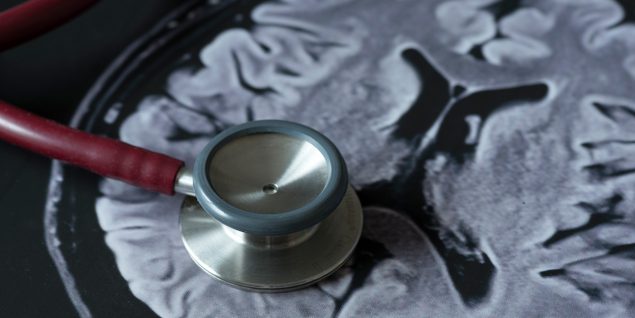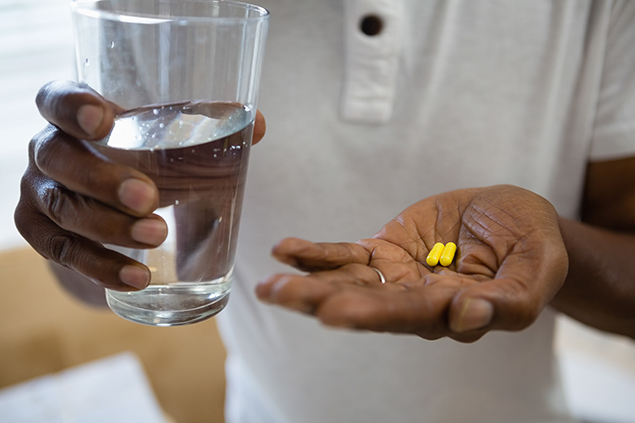California Creates a Toolkit to Assess Stroke Patients After Discharge
Success Story from the Paul Coverdell National Acute Stroke Program
Overview

Stroke is a leading cause of disability and death in California, and more than 16,000 residents died of stroke in 2018.1
CDC’s Paul Coverdell National Acute Stroke Program (Coverdell Program) works with state health departments to improve the quality of care from the time a person has a stroke until they leave the hospital and return to their primary care doctor for outpatient care.
In California, the Coverdell Program helped create a toolkit that would allow for more thorough follow-up on stroke patients and stroke data collection. These resources were funded by the California Stroke Registry/California Coverdell Program (CSR/CCP) and were created by a team in the country’s second largest public safety-net system, the Los Angeles County Department of Health Services (LAC-DHS). The intervention was piloted at the Los Angeles County + University of Southern California (LAC+USC) Medical Center, the largest hospital in LAC-DHS, and the Rancho Los Amigos National Rehabilitation Center (Rancho).
Challenge and Approach
People who have a stroke are at high risk of having another stroke or stroke-related complications after they leave the hospital. They are also at risk of not getting the follow-up care they need.
To address these problems, Amytis Towfighi, MD, led a team in LAC-DHS to develop a toolkit and protocol to assess stroke patients 30 days after they leave the hospital. The team conducted a pilot test of these resources from April to June 2019.
The toolkit allowed nonclinical staff to conduct post-discharge follow-up calls and included scripts in English and Spanish. The interviewers helped capture post-hospital data for stroke to evaluate how the patient transitioned from the hospital to home. Grantees in the Coverdell Program typically collect in-hospital patient care data; however collecting data in the post-hospital setting has been a challenge.
Before they were discharged, patients received information about stroke warning signs and symptoms, self-management tools such as blood pressure logs and monitors, and resources on how to quit smoking. Information was provided in English and Spanish.
“I am very happy that the hospital not only followed up with my mom but followed up with me as well to confirm our appointments.”
Accomplishments
Of the 83 stroke patients discharged from LAC+USC Medical Center during the 90-day pilot test, clerical staff were able to reach 56 who agreed to participate in the assessment. Of those 56, nearly 3 in 4 spoke Spanish as their primary language; 31 of them had been hospitalized after experiencing an ischemic stroke, 13 had experienced an intracerebral hemorrhage, and 12 had a transient ischemic attack.
Findings from the 56 patients were as follows:
- 26 (46%) had scheduled post-discharge appointments with a neurology advanced practice professional (i.e., nurse practitioner or physician assistant).
- 39 (70%) had not gone to an emergency room for health complications after being discharged.
- 41 (73%) were not readmitted to the hospital.
- 0 (0%) reported stroke-related complications, such as deep vein thrombosis or pulmonary embolism.
Lessons Learned

A team in LAC-DHS created a toolkit and protocol that nonclinical staff could use. This approach helped medical professionals reach discharged patients. The biggest challenge for the team was reaching all patients. The team increased their reach by getting more than three contact phone numbers at discharge, calling during evenings and weekends, using nonblocked telephone numbers, and following up multiple times.
During the stroke admission, the clinical team arranged follow-up appointments within 2 weeks of discharge to ensure a smooth transition to outpatient care; however, not all patients made it to these appointments.
These appointments allowed the team to assess patients for complications, ensure that patients were not having problems with their medications, titrate blood pressure medications as needed, reinforce stroke education, and coordinate follow-up care. Patients told CSR/CCP that these appointments were valuable.
“I was able to talk to a pharmacist about which medications I should be taking in the morning and at night.”
Next Steps
CSR/CCP distributed the toolkit to more than 70 California hospitals and health systems. The toolkit gave the hospitals and health systems detailed instructions and scripts for conducting their own post-hospital discharge phone calls. The goal is to add the 30-day follow-up calls to the job duties of stroke program coordinators.
CSR/CCP seeks to improve the continuity of care for patients who have experienced strokes in California. CSR/CCP supports health care professionals in their efforts to find effective ways to ensure that stroke patients have follow-up appointments before leaving the hospital. The toolkit will help health care professionals evaluate the effectiveness of their efforts once patients have returned to the community.
Additional Information
- CDC: Paul Coverdell National Acute Stroke Program
- California Department of Public Health: California Stroke Registry/California Coverdell Program
- American Heart Association: Get With The Guidelines® Post-Discharge Follow-up Form
Reference
- Centers for Disease Control and Prevention. Stroke Mortality by State. Accessed July 24, 2020.
